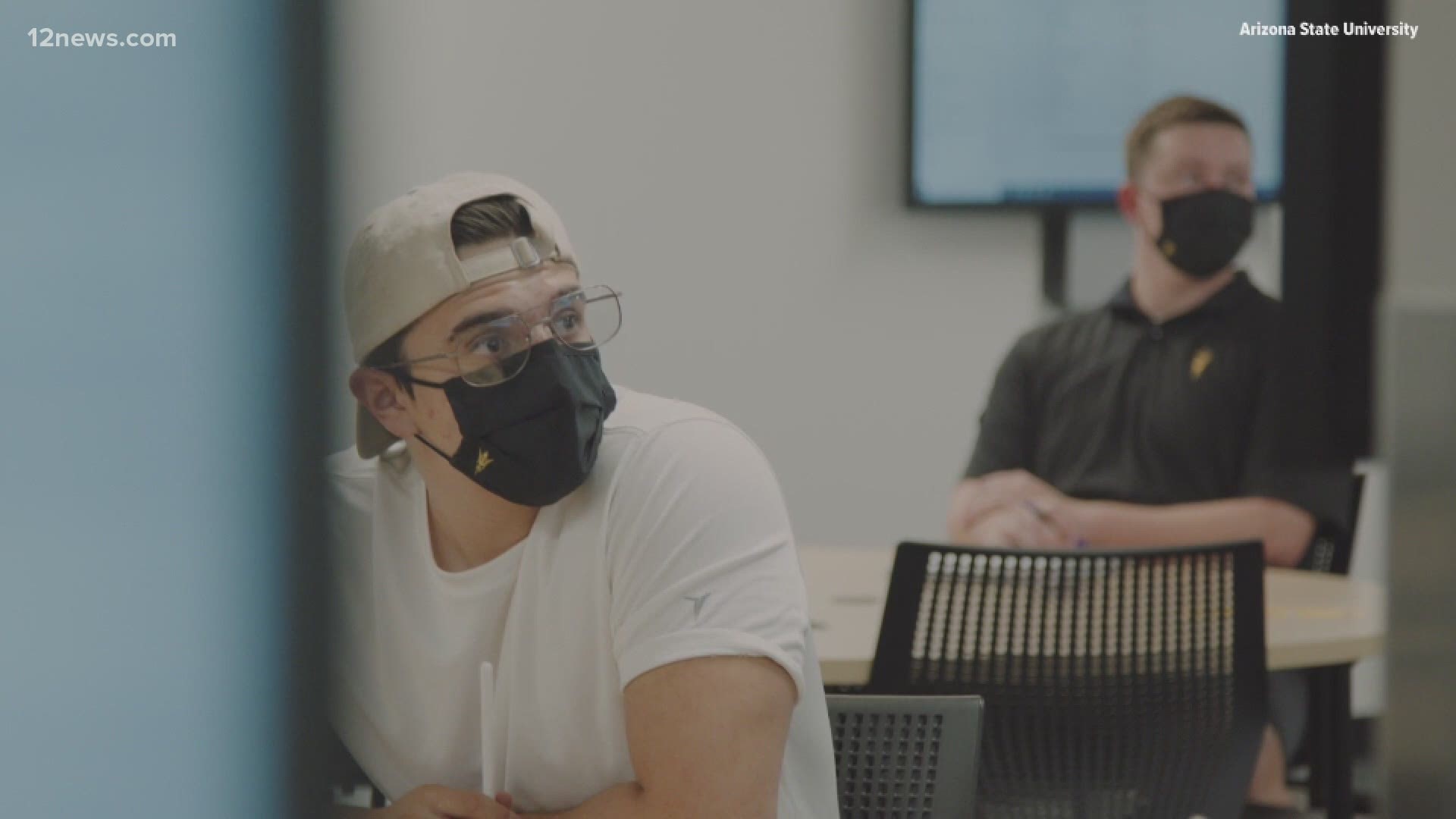PHOENIX — Arizona State University students and employees have been back in classes since Aug. 20. Since then, the number of COVID-19 cases on the four campuses has been growing.
The university is keeping track of data online reporting current cases but not cumulative ones.
This has caused some to question if university officials are being transparent enough, but President Michael Crow said ASU is using all of their resources including testing as well as requiring both students and employees on campus to use a daily health check mobile app to slow the spread and isolate cases.
During a Zoom interview on Wednesday morning, Crow said:
"We are a 24/7 institution. We have people living on campus, we think every day for the last 70 years. We've had people working 24 hours a day for decades. The campus has maintained all of our research groups in different working modalities obviously during COVID."
ASU has been less than transparent about its COVID-19 case count since the start of the pandemic. So far, only publicly reporting current cases and not cumulative like state and county health departments.
“Our report is not a public health report. Our report is a report on the status of operation of the university,” said Crow.
However, this will now change. Crow said the university will begin reporting:
- Cumulative Cases
- New Cases
- Numbers of students cleared for return after quarantine
ASU will release updates Monday and Thursday evenings which will include:
- Total positive cases
- New positive cases
- Cumulative numbers
ASU released a statement about cases on campus:
Since August 1, we have collected approximately 48,152 test results from students and employees. The incidence of testing has increased as we launched periodic testing of a statistically significant percentage of the on-campus population. ASU maintains a low positive incidence with students and an even lower positive incidence with faculty and staff.
Cumulative number of positive tests since August 1, 2020
- Students: 1305
- Faculty and staff: 25
Cumulative number of individuals cleared for release
- Students: 610
- Faculty and staff: 138
As of Sunday, Sept. 6, 807 students were known to be positive with 146 isolating on campus.
ASU researchers are randomly testing the Sun Devil community in order to more accurately identify if the virus is spreading but that takes time according to Josh LaBaer, Executive Director and Professor, Biodesign Institute, “To get a good random sampling we have sample there are some in resident halls. There are some at home. There are faculty members. There are people all over.”
President Crow said that as of now the numbers are trending in the right direction, but they will pivot if numbers increase, "You can see our modalities articulated in our site. We have five resident hall modalities and four university modalities."
The university is currently operating under the level two modality.
ASU Learning Modes of Operation
Learning Mode 1: Instruction is delivered to students by faculty in-person, on-campus without special public health requirements. Instruction is also available to students digitally through ASU Sync and iCourses.
Learning Mode 2: Instruction is delivered to students by faculty in a hybrid fashion. Courses are offered in-person, on-campus at a reduced capacity and are also available to students digitally through ASU Sync and iCourses. All faculty, staff and students are required to comply with public health requirements. Students can choose their preferred learning environment to accommodate their needs. This is the mode in which ASU started the fall semester. This mode will continue until circumstances permit it to move up or require it to move down.
Learning Mode 3: The majority of courses are delivered to students digitally through ASU Sync and iCourses. A limited number of courses that do not translate to a digital environment such as labs and performing arts, are offered in-person, on-campus at a reduced capacity. All faculty, staff and students are required to comply with public health requirements.
Learning Mode 4: Instruction is delivered to students digitally only through ASU Sync, iCourses and ASU Online. There is no in-person classroom instruction at all.
But ASU has pivoted to a different University Housing Model.
ASU University Housing Modes of Operation
University Housing Mode 1: Regular Mode of Operation: Residence halls at full capacity. External visitors allowed in buildings.
University Housing Mode 2: Limited Mode of Operations: ASU fills residence halls at lowered capacity to provide for flexibility in self-isolation and quarantine spaces. Guests in residence hall rooms are limited to those within the hall. This is the mode in which ASU started the fall semester.
University Housing Mode 3: Increase security and enforcement; restrict ingress with no external visitors and one guest per room from within the same residence hall at any given time; de-densify higher risk living configurations with communal bathrooms and communal living situations; housing removal for repeat violations; and facilitate single occupancy and process approved housing License Agreement Release requests. This is the mode ASU is currently operating in.
University Housing Mode 4: Essential Only: Students who have no other options will be allowed to request an exemption to live in residence.
University Housing Mode 5: Closed: No use of residential halls.


